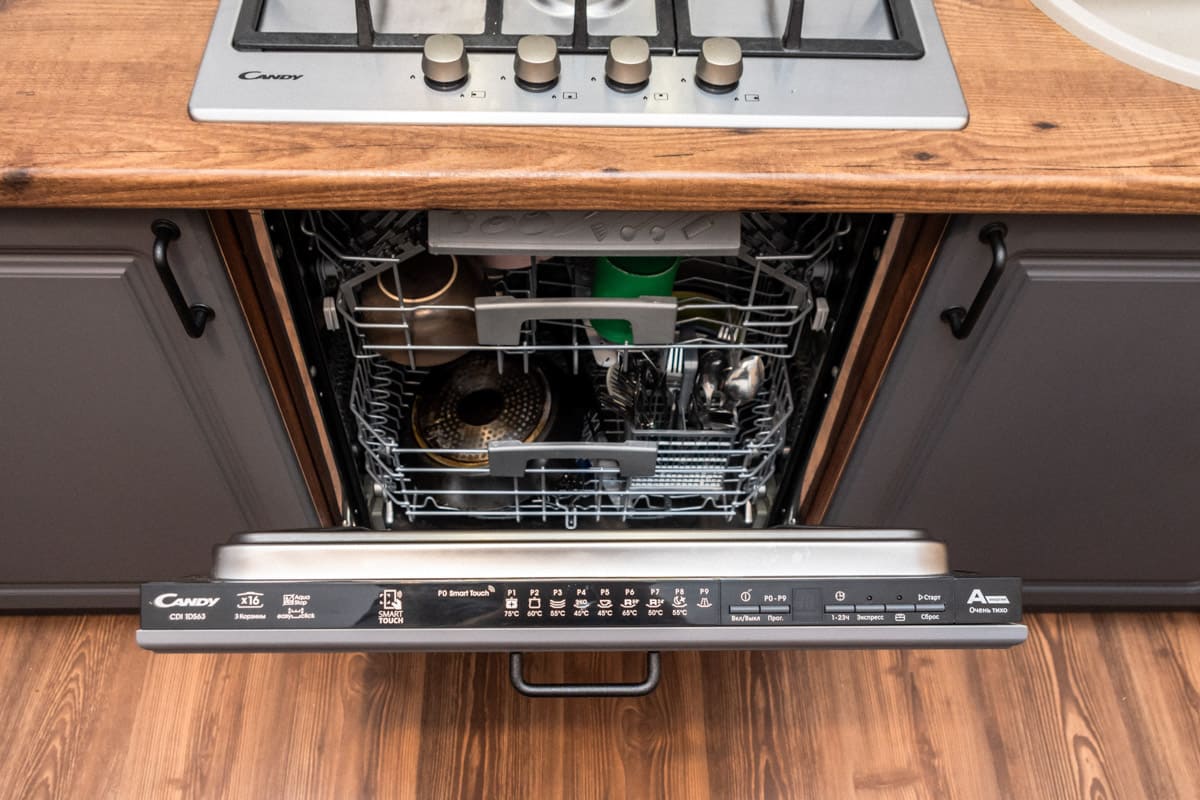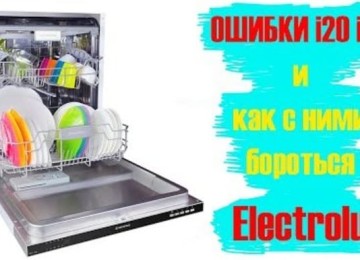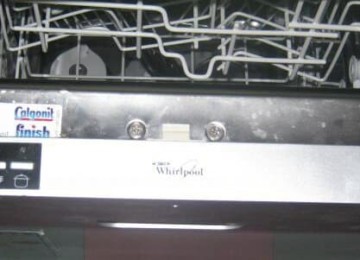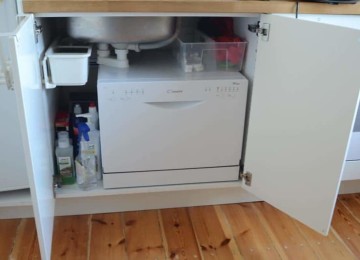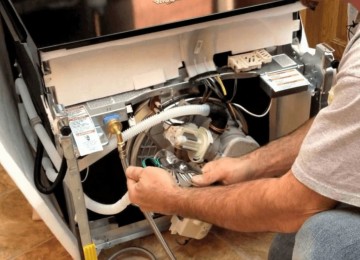A dishwasher saves the housewife time and effort. Dirty, sticky dishes after washing are a real disaster. The reasons for poor operation of the unit may be breakdowns inside the equipment or improper operation. Often the problem of dishes not washed to a shine occurs when the dishwasher does not heat the water. And cold water leaves dirty stains on the surface. From this article you will learn about the reasons why the water in the dishwasher does not heat up.
How can you tell if your dishwasher is not heating the water?
The main signs of lack of water heating:
- Sticky, oily dishes. Fat is not washed off with cold water.
- Cutlery is cold to the touch after washing.
- The pipe does not heat up when draining water.
- Residues of detergent on dishes. The tablets did not completely dissolve in water.
- Wet kitchen utensils. It will not dry in the machine without heating.
What happens if you use a dishwasher without heating the water?
New models have hot water parameters for any mode.If there is no heating, they turn off after a few minutes and an error code appears on the display. In the code instructions you can find out the reason for the machine stopping.
Without hot water, dishes will only rinse. There will be no disinfection or excellent cleaning. Some machines, according to the instructions, can be connected to hot water through a special inlet hose. In this case, the water flow must have a certain temperature and flow without pressure drops. These conditions are rarely met, so sinks with a connection to a hot channel are not in demand.
All parts of the dishwasher mechanism are interconnected
If one link fails, the operation of the entire system is disrupted. The dishwasher does not heat water in the following cases:
- heating element failure;
- if the thermostat does not regulate the temperature;
- The control panel has failed.
Diagnosis of breakdowns includes checking the operation of system filters, pressure sensors and water valves.
How to replace heating elements in dishwashers?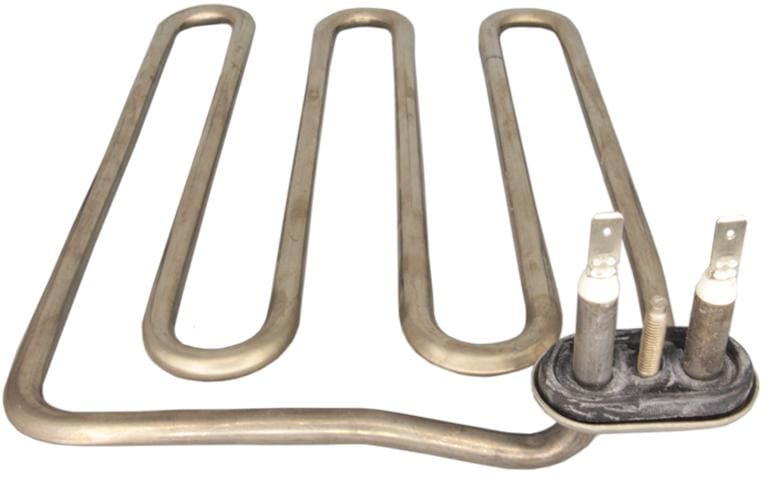
A tubular electric heater is a device with a built-in spiral made of a special material. When an electric current passes through the spiral, heat is released and the liquid is heated to the required degrees. If there is a problem with the heating element, an error code is displayed on the display.
The heating element may not work if the wire contacts are lost due to limescale. It is necessary to replace the contacts on the wires, and the contacts of the heating element are polished to a shine.
The heating device is located inside the dishwasher's hydraulic system. To gain access directly to the heating element, the unit is turned on its side and the back panel is removed. To diagnose the heater, measure the resistance using a tester.A working part will show values around 22 Ohms.
A new heating element can be installed after dismantling the broken device. The rules are simple, but a specialist will do it faster and more reliably:
- Close the taps on the water pipes.
- Disconnect from the electrical network and communications.
- Empty the dish baskets. Remove them from the machine.
- Remove the lower sprayer and drain filter.
- Unscrew the 5 bolts on the bottom that attach the circulation pump.
- Turn the unit over. Depending on the model, remove the back wall or bottom.
- Disconnect the drain pump, pumps, hoses, wires and pipes.
- Disconnect the sockets and sensor plugs.
- Replace the faulty heating element with a new one. Then measure the resistance using a tester.
- Return everything in reverse order.
- Be sure to check the unit in text mode.
Checking the thermostat operability
The device has a wide range of temperature settings. The thermostat is a special device that measures the water temperature and sends information to the software unit. If the sensor does not work, the module does not instruct the heating element to heat the water.
In the devices, the thermostat is located next to the heating element to respond faster to temperature changes. To check the thermostat, you need to remove it. To do this, repeat the entire process of disassembling the unit, as for installing the heating element.
Next, clean the contacts on the thermostat. Connect the multimeter to the terminals and measure the resistance level. If there is no resistance on the sensor, it is burnt out. There is no point in installing it back, you will have to buy a new one.
- Failure of the machine control system
- A full diagnosis of the system is performed on special equipment.A working part will show values around 22 ohms.
- Installation of a new heating element is possible after dismantling the broken device. The rules are simple, but a specialist will do it faster and more reliably:
- Close the taps on the water pipes.
- Disconnected from the electrical network and communications.
Empty dish baskets. They take them out of the washing mashine.
Remove the lower sprayer and drain filter.
Unscrew the 5 bolts at the bottom that secure the circulation pump.
Turn the unit over. Depending on the model, the back wall or bottom is removed.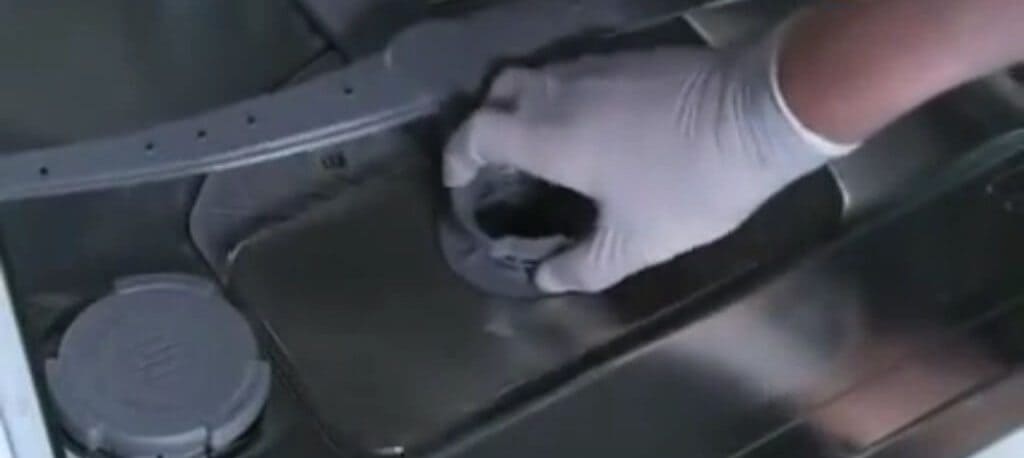
Disconnect the drain pump, pumps, hoses, wires and pipes.
Disconnect the bells and plugs of the sensors.
- Replace the faulty heating element with a new one. Next, measure the resistance using a tester.
- Everything is returned in reverse order.
- Be sure to check the unit in text mode.
- Checking the functionality of the thermostat
- The device has a wide temperature setting range. The thermostat is a special device that measures the water temperature and sends information to the software node. If the sensor does not work, the module does not instruct the heating element to heat the water.
In devices, the thermostat is located next to the heating element to respond more quickly to temperature changes. To check the functionality of the thermostat, you need to remove it. To do this, repeat the entire process of disassembling the unit, as for installing a heating element.
Next, clean the contacts on the thermostat. Connect a multimeter to the terminals and measure the resistance level. If there is no resistance on the sensor, it means it has burned out. There is no point in installing it back; you will have to buy a new one.
- Failure of the machine control system
- Full system diagnostics are performed using special equipment.The control unit is a board on which the parts are installed. The device of dishwasher microcircuits has several degrees of protection. Only an experienced specialist can check the functionality of the entire system. The first step is to update the software. Temporary disruptions may occur due to a power surge. If the firmware does not help, change the board.
- Signs that a module needs to be replaced are:
The dishwasher won't turn on.
On the indicator panel, the lamps of all modes light up simultaneously.
The equipment itself changes the dishwashing modes.
Stops during operation without completing the entire cycle.
The door does not open.
The module controls all washing processes. To replace it yourself, the top part of the dishwasher is disassembled and the control panel is removed. The mounting screws are unscrewed. Electrical wires are disconnected. Installation of a new control unit occurs in reverse.
What causes a faulty pressure sensor?
The operation of the device is to control the circulation of water in the machine. If the pressure sensor stops functioning normally, then continuous movement of water occurs in the system. Automatic drainage and refilling of a new portion of liquid occurs. The heating device does not have time to maintain the desired temperature. The dishes are washed with slightly warm water and remain dirty after the process is completed. The problem is resolved by replacing the pressure sensor.
Cleaning filters yourself
Proper operation of the machine will extend its service life. To prevent breakdowns, inspections should be carried out regularly. Failure to clean filters in a timely manner can also lead to element failure.Residual deposits enter the system and destroy the sensors. Due to accumulated dirt, water circulation slows down, and heating devices cannot cope with their work and automatically turn off. The program execution is interrupted and an error code appears on the display.


